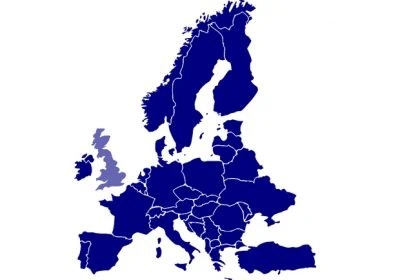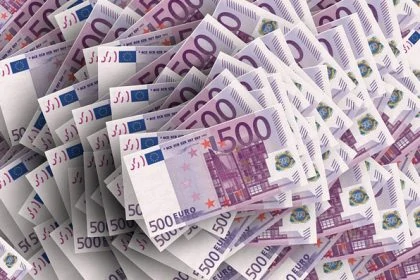The change from a device claim to a use claim is inadmissible if the change of the object of the invention is connected with it at the same time, the BPatG ruled in a leading decision. The focus was on invalidity proceedings for the patent “dental implant” with a surface structure according to the invention.
 In case “dental implant” before the German Supreme Patent court, according to the invention the surface structure was referred to as the depletion zone. A nanoscopic spatial-body structure of the surface with reduced yttrium or aluminium oxide content was summarized in the term depletion zone.
In case “dental implant” before the German Supreme Patent court, according to the invention the surface structure was referred to as the depletion zone. A nanoscopic spatial-body structure of the surface with reduced yttrium or aluminium oxide content was summarized in the term depletion zone.
This surface structure was the focus of a invalidity proceeding concerning the European patent 2 046 235 for a dental implant. The contested patent was declared invalid by the Federal Patent Court (BPatG) with effect for the territory of the Federal Republic of Germany due to lack of patentability (Art. II § 6 para. 1 no. 1 IntPatÜG) (judgment BPatG of 18.07.2019, 4 Ni 49/17 (EP)).
Leading decision of the BPatG
- If a device has a sophisticated design which is functionally described only in the description and not in the patent claim by a certain processing, the process can be used to interpret the term or structure used in the patent claim (according to the principles of the meaning of product-by-process features), but not in such a way that the patent forms its own lexicon for such a restrictive understanding of the claim feature and the associated structure must be processed exclusively by the preferred process.
- Although it is not excluded that such a sophisticated surface marked by “depletion zones” may also be produced by other etching processes, this does not relieve the plaintiff of the nullity obligation to name such further processes by stating concrete process parameters and results.
- The change of category from a device claim to a use claim is inadmissible if the change of the invention object is connected with this at the same time.
Disputed patent marked by depletion zone
The patent in dispute describes a dental implant, literally according to patent claim 1 “characterized in that the surface of the ceramic body is provided, at least in a partial region, with a structure having nanoscopic pores or otherwise of a nanoscopic design and which has a depletion zone based on yttrium and/or aluminium oxide stabilized zirconium oxide with a reduced yttrium or aluminium oxide content in comparison with the internal volume”.
Surface structure according to the invention is not inventive
At the centre of the patent dispute lies the feature of the depletion zone, quantitatively characterised by the reduction of yttrium oxide and aluminium oxide. The Federal Patent Court (BPatG) considered it essential that the inventive nanoscopic structure according to the doctrine of the patent in dispute is functionally described only in the description by the manufacturing process, namely by suitable etching.
It is taught in accordance with the patent in dispute, but at least it is not ruled out that a depletion zone can also be achieved with other etching processes, for example those mentioned in the state of the art. However, the patent specification does not specify the suitable parameters for this, whereby the zone of impoverishment according to the invention does not even have to be produced by an etching process, but on the other hand no other types of production are mentioned. This justifies the consideration of the demanding theory on the basis of a depletion zone produced by etching, the patent court explained.
In patent claim 1, however, an etching process according to the invention is neither claimed as such nor does it serve as a functional description of the nanoscopic structure of the invention object, the court summarized. Even the preferred execution example according to the description mentioned only a few parameters of the etching process. Thus, it was not ruled out that a surface in accordance with the patent features could be achieved even with the disclosed procedure, but the plaintiffs did not provide proof of this. For example, in the IB15 publication, a surface treatment process was disclosed by multi-stage sandblasting, etching and heating.
Change to use claim
It is true that the use of an impoverishment zone can be inferred directly and unequivocally from the documents originally filed as belonging to the invention for which a patent has been applied. The BPatG also clarified that a category change from a device claim to a use claim was to be regarded as permissible according to settled case-law.
However, this did not include a related change of the patent subject matter to be used into the use of another subject matter, which had previously only been part of the invention subject matter, but not another independent invention subject matter, the BPatG ruled as a ruling on the guiding principles. In the present case, this is the change from a dental implant with an impoverishment zone to the use of an impoverishment zone – a change to a use claim.
Perhaps also of interest to you: Use claim in medical indications: eligible for utility models
The European patent 2 046 235 was therefore declared invalid with effect for the territory of the Federal Republic of Germany due to lack of patentability. The judgment is provisionally enforceable against a security of 120% of the amount to be enforced, but an appeal against this judgment is admissible within five months of delivery.
Would you also like to protect or defend your patent?
Our patent and trademark law firm has many years of expertise in patent law and intellectual property protection. Our attorneys are entitled to represent you before any court in Germany as well as internationally.
If you are interested, please contact us.

Sources:
Judgement of BPatG, leading decision dental implants (in German)
Image:







Leave a Reply